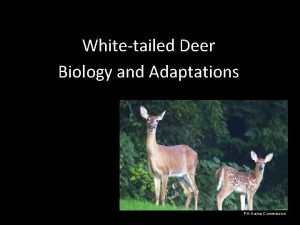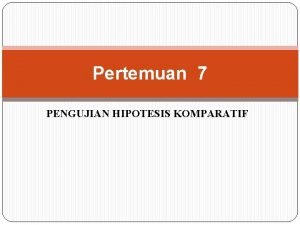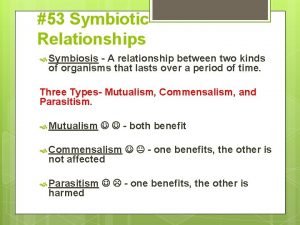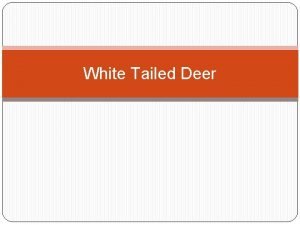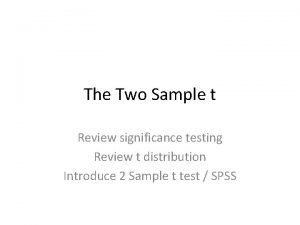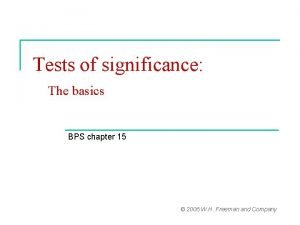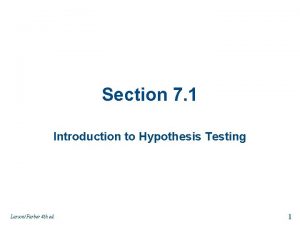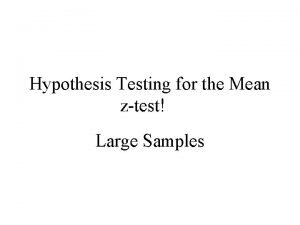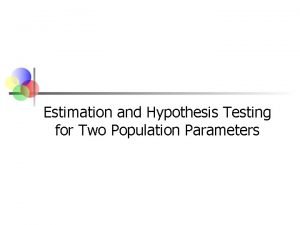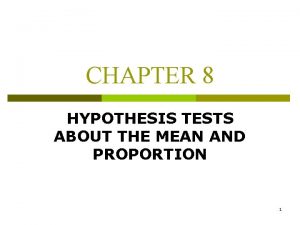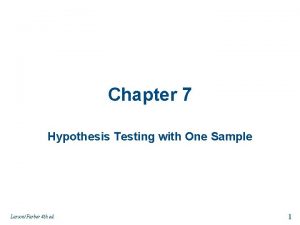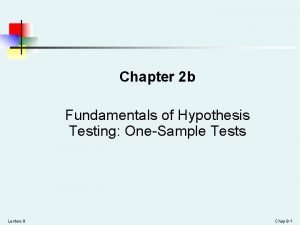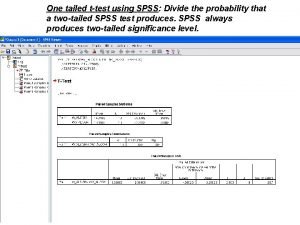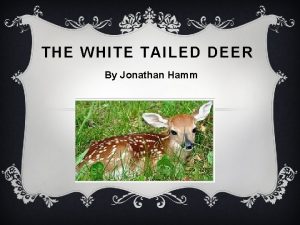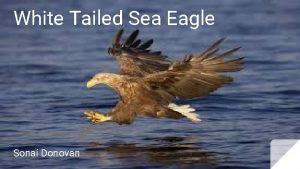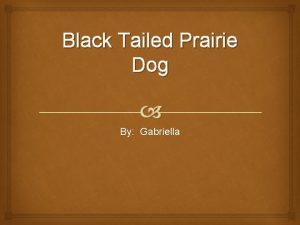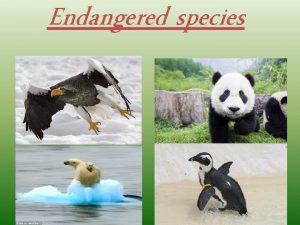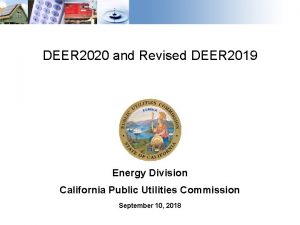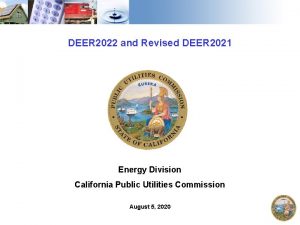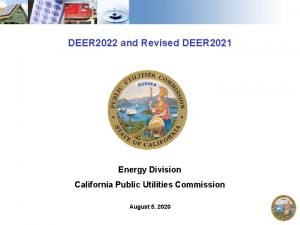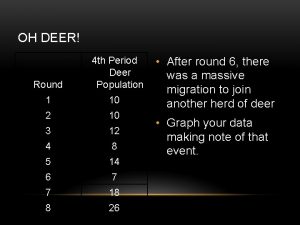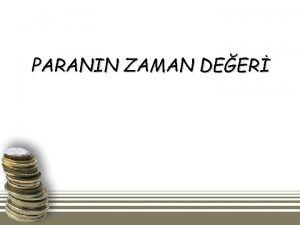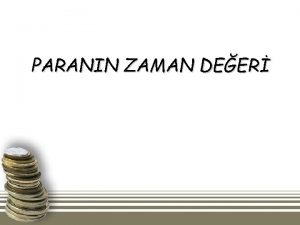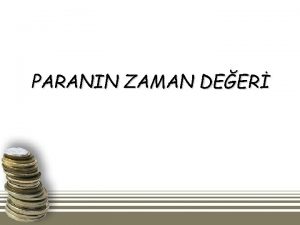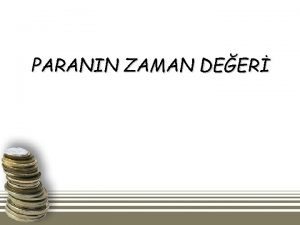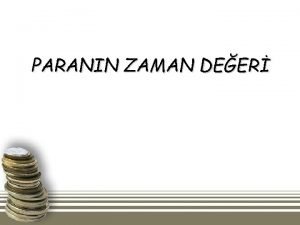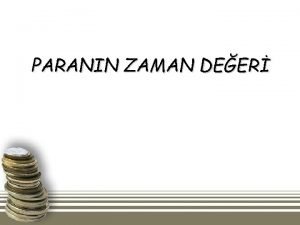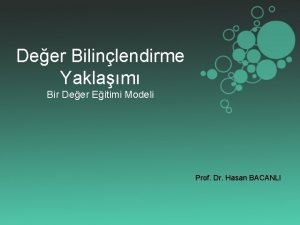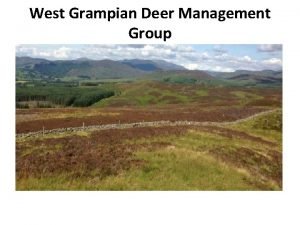White Tailed Deer What are the physical characteristics



















- Slides: 19

White Tailed Deer

What are the physical characteristics? Size 3 feet tall at withers 5 -6 feet in length Northern deer are larger Adult females weigh 100 pounds Adult males weigh 100 -150 pounds Newborn fawns weigh 4 -8 pounds Weight depends on region, habitat, age, season

What are the physical characteristics? Pelage and color Winter pelage: thick, grayish in color, short under fur with long guard hairs. Shed April-June Summer pelage: short thin, reddish in color. Shed August. September Fawn pelage: spotted for protection. In August-September, lose spots White markings around eyes, nose, throat, under belly and rump. Long white hairs under the tail, “white tailed deer”

What are the physical characteristics? Glands Preorbital gland: lower corner of eye, scent markings on rubs Tarsal gland: inner hock on rear legs. Scent marking on scrapes Metatarsal glad: outer rear legs, scent marking on bedding area, sense vibrations Interdigital glands: between toes, scent marking trails Forehead: below antler base, scent marking on rubs


What are the physical characteristics? Senses Vision Monocular Binocular Motion detection acute Peripheral vision Very good night vision Color blind Rarely look up Smell Critical for survival Warning, breeding activity, food and family group location

What are the physical characteristics? Hearing Acute hearing Antenna-like ears Investigate sounds Adapt to sounds Taste Similar to humans Touch Critical to fawn survival Stimulates doe receptivity

What are the physical characteristics? Skeletal System Prey animal adapted for running Gait is a mix of leaping and long strides Efficient runner and swimmer

What are the physical characteristics? Antlers Fastest growing tissue in animal kingdom True bone, grow directly from skull Velvet aids in growth. Growth period: May-August Velvet antlers sensitive 2 categories: Typical Non-typical

What are the physical characteristics? Scoring Systems Boone and Crockett Pope and Young Antler size depends on genetics, nutrition, and age Antler growth dependent on male hormone Antler hardens and velvet sheds in August Decrease hormone level after rut triggers antlers to “cast off”

What are the physical characteristics? Teeth No upper front teeth 32 teeth Used to determine age Average lifespand 2 -3 years bucks, 4 -6 years does

What are the physical characteristics? Digestive System Ruminants 4 chambered stomach Rumen Reticulum Omasum Abomasum Deer droppings Estimate age Locate bedding, feeding and trail areas Population census Stand location Current activity

What is the reproductive process of the white-tailed deer? Correlated to four seasons Summer Family groups of does and fawns Bachelor group of bucks Dominance established during summer non-violently

What is the reproductive process of the white-tailed deer? Fall Bachelor groups break up Three distinct phases Pre-rut Antlers harden, shed velvet Bucks make “rubs” Sparring matches Bucks eat less, spend time alone Does continue feeding Does ward off bucks

What is the reproductive process of the white-tailed deer? Rut Minnesota rut is mid October-December Triggered by “photoperiodism” Bucks neck enlarges Buck makes scrapes Buck very aggressive Doe indicates receptivity Several days of courting Does in estrous for 24 -36 hours every 28 days

What is the reproductive process of the white-tailed deer? Post-rut Buck’s hormone level decreases Buck begins to eat heavily Antlers cast off

What is the reproductive process of the white-tailed deer? Winter Breeding activity ends Gestation is 187 -212 days Deer regroup and “yard-up” Mortality

What is the reproductive process of the white-tailed deer? Spring Antler growth begins Fawns born May-June Does seeks solitude Twins/triplets in high quality habitat After birth, doe quickly cleans fawn Spring fawn mortality is high

What type of communication do white -tailed deer use? Stomping Scent glands Tail movements Tail wagging Tail flicking Tail flagging Vocalization Fawn bleat Doe bleat Bawl Doe snort Buck snort
 Deer structural adaptations
Deer structural adaptations Critical value method
Critical value method Uji hipotesis penelitian kuantitatif
Uji hipotesis penelitian kuantitatif Antigentest åre
Antigentest åre Ticks feed on deer blood to the deer’s detriment
Ticks feed on deer blood to the deer’s detriment Physical characteristics of a deer
Physical characteristics of a deer Sig. (1-tailed) spss interpretation
Sig. (1-tailed) spss interpretation Two tailed test p value
Two tailed test p value Alternatuve hypothesis
Alternatuve hypothesis Long tailed distribution
Long tailed distribution Ztest
Ztest Sample and population difference
Sample and population difference P value equation
P value equation Null hypothesis symbol
Null hypothesis symbol Hypothesis test example
Hypothesis test example One tailed t test spss
One tailed t test spss Hypothesis testing
Hypothesis testing Four tailed bandage
Four tailed bandage Whats amphibians
Whats amphibians What is a nonsense poem
What is a nonsense poem
